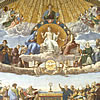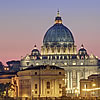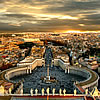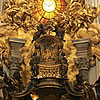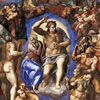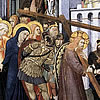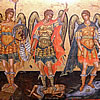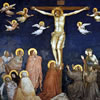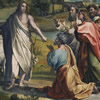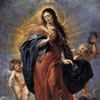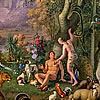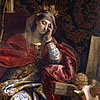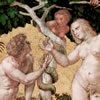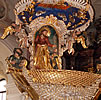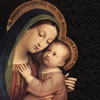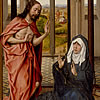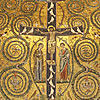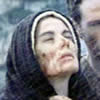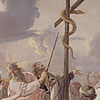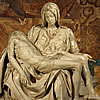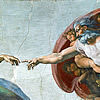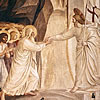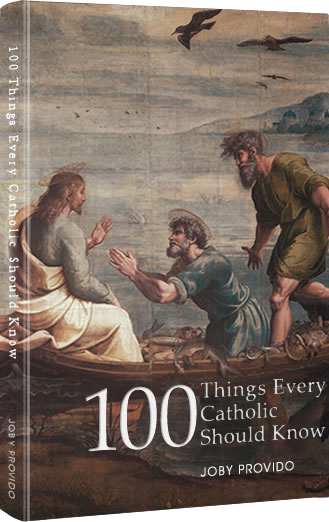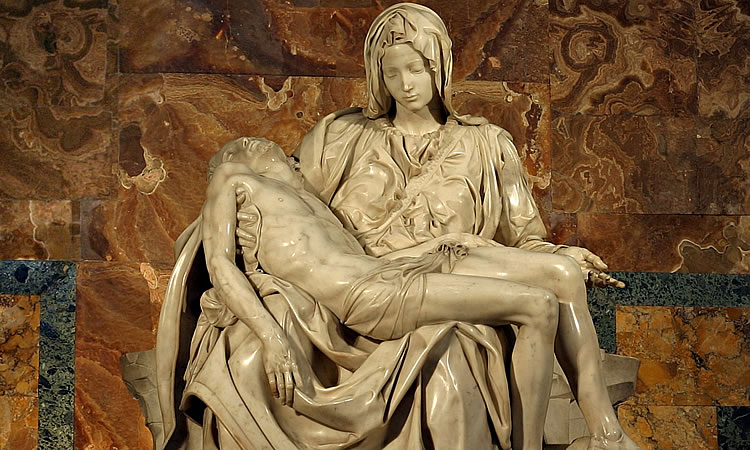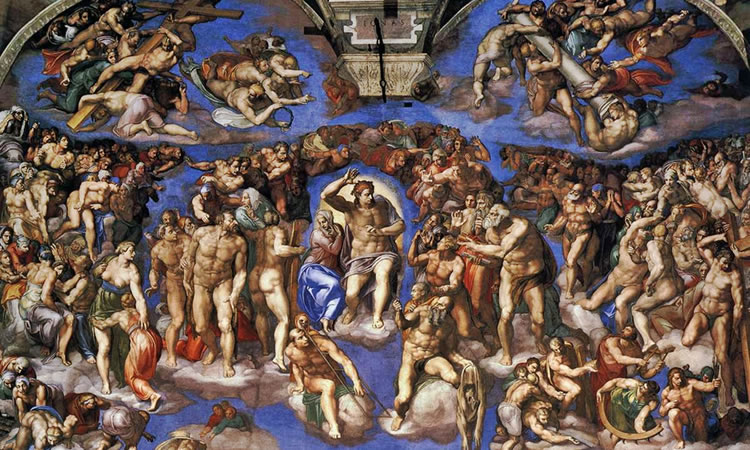

The Creation of Adam
The Creation of Adam is probably the most recognized work of art in the Sistine Chapel, and probably in the entire art world. Basically, it is a fresco of Adam in a very relaxed position as if there is no life in him yet. Visually next to Adam is God with an outstretched finger just about to zap energy into him. This, of course, is a visual representation by Michelangelo of God “blowing life into the nostrils of Adam.” (Genesis 2:7)
This analysis is almost incontrovertible because it is widely accepted by art scholars. However, there is much talk about who are the other “people” beside God. It is generally agreed that these people were not created yet – obviously because Adam was the first man. Scholars like to say the woman under God’s other arm is Eve who God will later fashion from Adam’s rib. (Genesis 2:22) Others like to say it is Mary, the “new Eve.” Let us hold this thought in suspense for a few paragraphs and then return to it as we lay the ground for some context clues that point to it.
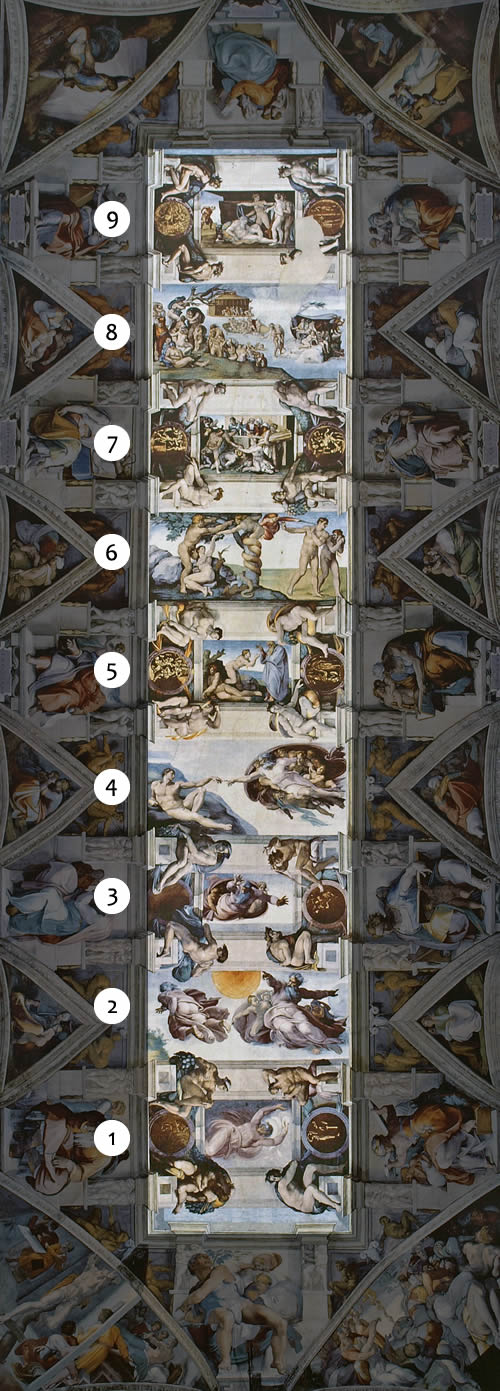
The Sistine Chapel is Michelangelo’s visual retelling of Creation. There are nine panels where we see this happening. In the first panel, God separates light from darkness. In the second, God creates the sun and planets. In the third, God divides water from dry land. In the fourth, God creates Adam. In the fifth, God creates Eve. In the sixth, Adam and Eve disobey God and are separated from Eden. In the fifth, Noah makes a sacrifice. In the sixth, the Great Flood. And in the ninth, Noah is disgracefully drunk (Genesis 9:21).
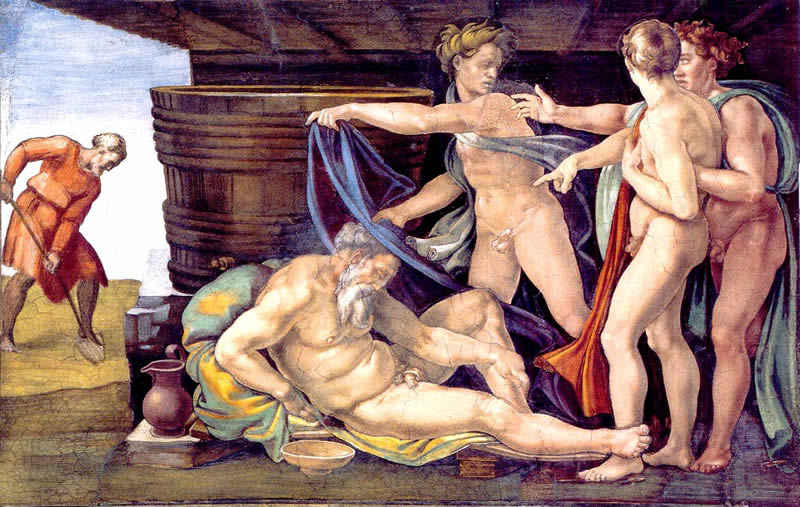
Scholars say that the image of Noah in this ninth panel is strikingly the same as Adam in the fourth: the head is facing the same direction, and the torso, arms, and legs are positioned the same way. It is a visual way of showing what has happened to mankind since Adam. If Adam represents humanity in panel four, then just a few generations after, Noah represents the descendants of Adam who have fallen into disgrace as an effect of original sin in panel six.
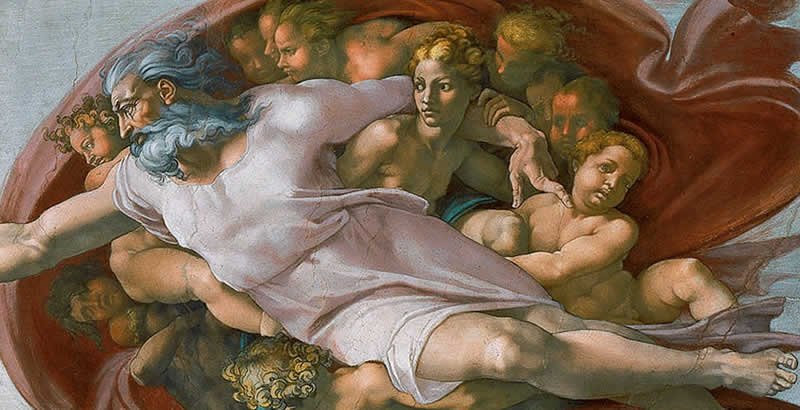
With that as a context clue, we go back to panel four. In the “uncreated” side of God, on the right of the woman is a child. The child’s head faces the same direction as Adam, the torso is skewed in the same way, and so are the legs positioned similarly. Scholars like to say this is Jesus, the “New Adam”. As God is about to touch Adam with his finger, so does God touch the New Adam with his finger. If the child is Jesus, then this would then mean the woman beside God is Mary, the “new Eve” who must me created before Jesus – shown in the fresco as if they were in a queue to be created.
The implication of this is massive because that would mean even before the creation of Adam, God had already planned Mary and Jesus.
Because God is all-knowing, he already knew that Adam and Eve would disobey him and sever their relationship with him. Because of this, he knew that somewhere along the line, someone was needed to undo the disobedience of Adam; somewhere along the line, someone was needed to undo the disobedience of Eve.
So in his all-knowing mind, God could have decided not to create us at all. What is “massive” is that he did! Even if we were just an idea in his head, we mean so much to him that it would be better to create us and allow us to hurt him, rather than not create us at all. In fact in creating us, he knew he had to become “a slave” and undergo the Passion and Crucifixion where we would hurt him physically! In another point of view, some theologians even go to the point of saying God allowed mankind to fall so he could become human and mingle with us in human form. We refer to it as a “happy fault” and sing of it in the Paschal Vigil Mass,“O Felix Cupla”, Oh Happy Fault.
Next time we look at Michelangelo’s Creation of Adam, let us also see God’s magnificence, love, and mercy; for in creating Adam, he put in motion a plan of his own “suffering” in a self-emptying sacrifice on the cross just so we can be created with the hope of being his sons and daughters.
Resources on the fresco:
http://www.artpieces.net/creation-adam.html
http://www.michelangelo.net/creation-of-adam/
http://www.italianrenaissance.org/michelangelo-creation-of-adam/
http://study.com/academy/lesson/the-creation-of-adam-by-michelangelo-analysis-lesson-quiz.html



